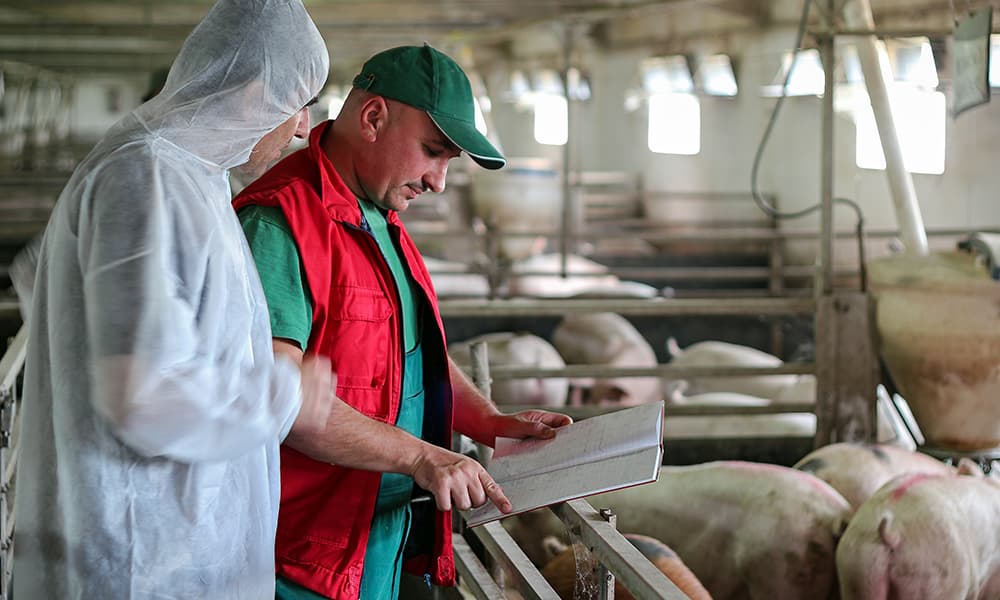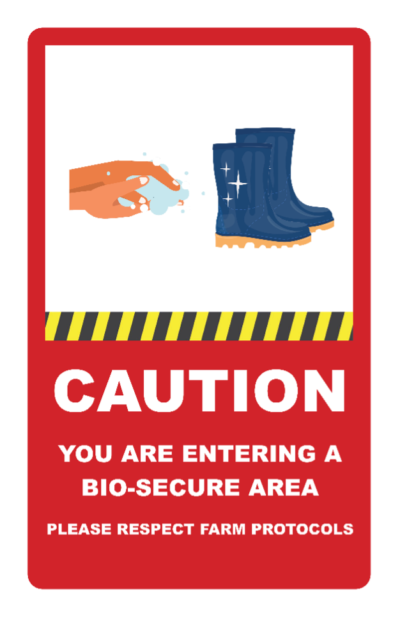Biosecurity Overview
The best practice to protect your farm from diseases-“Biosecurity”
Through this module, let us familiarize ourselves with what is Biosecurity and why is it important for swine producers or veterinarians to learn about it.
Overview
“Biosecurity” describes practices that prevent the introduction of disease into a farm or its spread within or between farms. Biosecurity practices protect pigs from disease and help improve the farm’s overall productivity and income.
The Covid-19 pandemic made it clear that diseases cross borders in no time, regardless of the geographical distance between places. Pigs are highly susceptible animals and prone to various infectious diseases that are present within the country (endemic diseases) and in other countries (foreign animal diseases).
It is important to develop a shield of protection around pigs, which prevents the diseases from entering the farm and limits on-farm diseases spreading to healthy animals. First, start with a healthy herd, as an unhealthy herd increases the risk of infection.

Next, farms should adopt biosecurity plans. They ensure animal safety and limit financial loss (ex. Secure Pork Supply Plan) by enabling business to continue in the event of a disease outbreak in the area. This is especially true for farms with large herd sizes.
Why should a farmer with even 10 pigs care about all of this?
According to United States Department of Agriculture (USDA), every farmer owning one or more pigs is a part of the pork industry. Therefore, as a part of the pork industry, it is the responsibility of the farmer to maintain the health of his pigs.
However, not all farmers are expected or required to follow the same level of biosecurity. Every farm has different biosecurity requirements depending on various factors like herd size, farm location, production type, and the health status.

Place signs at farm entry points indicating its status as a bio-secure area.
Little is known about the treatment of emerging and re-emerging/novel diseases. On top of that, there are no effective vaccines or treatments against many diseases that have been around for decades because of their complexity. Even when new diseases show up, the already prevalent ones still exist, which increases the disease burden on the pigs and threatens the farm’s economic stability.
We can protect a herd from all these diseases and not just one specific disease by having solid farm biosecurity practices.
Biosecurity is not a one-time single-step process, unlike vaccination. It is a dynamic process that requires continuous evaluation and improvisation along the way. This might seem like a lot of work and investment, but it is a cost-effective way to secure strong and steady returns from your production unit.
This module includes structural and operational biosecurity measures that are functional, practical, and can be tailored to each unique farm.
What’s Next?
Now that you have a grasp of what biosecurity is, let us dive into various components of biosecurity that you build and practice to safeguard your farm against diseases.
